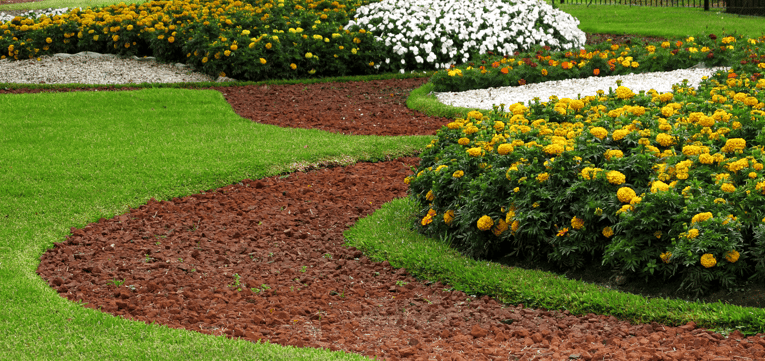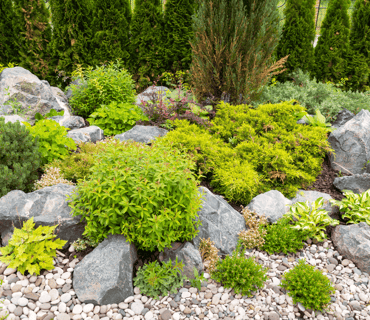 Now that the threat of frost has (hopefully) officially passed, one of the first things you may want to do as a new home owner is dash out onto your lawn and do some spring landscaping. With spring in full motion, raising your property's visual appeal with a vibrant lawn is an opportunity that's just too good to pass up.
Now that the threat of frost has (hopefully) officially passed, one of the first things you may want to do as a new home owner is dash out onto your lawn and do some spring landscaping. With spring in full motion, raising your property's visual appeal with a vibrant lawn is an opportunity that's just too good to pass up.
Listed below are a few tips to help you create landscaping that keeps your lawn both healthy and beautiful throughout the year.
1. Pick the Right Plants
Don’t just rely on your plant's growing label at the nursery. You also need to know your plant's ideal soil type, drainage setup, and lighting, which plant labels aren't always specific (or correct) about.
Perform some online research (by browsing articles and forums) to get advice from horticulturists, landscapers, nurseries, and casual gardeners just like you. How well does one prospective plant grow for people who live in a comparable climate or elevation? Look for comments from people who have grown the particular plant for a long time, as the adaptability of new or exotic nursery plants often hasn’t been carefully evaluated in different locations.
Native plants are very attractive options for this very reason, particularly those cultivated from local seeds. They're already accustomed to your environment, so you simply need to pick ones that match your yard conditions.
2. Start Off Small
Grow smaller trees and perennials. When we acquire baby plants, we can't wait for them to grow to their full height. But, just as with human beings, that doesn't happen overnight. A large plant in a large container still needs time to establish itself, typically much more than a smaller-sized plant, which is more resistant to shock-induced damage or death than an older plant during transplantation.
Smaller-sized plants cost less as well, allowing you to purchase as much as you need for immediate cover. Three-inch pots or planter trays are ideal if you want to plant a lot of grasses.
 3. Mix it Up
3. Mix it Up
In your garden, mix in shorter grasses, flowers, and plants with taller ones while planting to mirror nature. Many people tend to automatically break their garden edges and flower beds up into tiers, with short plants in the front or along the outer perimeter, mid-height plants in the centre, and large plants in the rear.
But it's perfectly okay and even desirable to switch things up by planting shorter items in the midst of taller ones. For instance, consider growing a one-foot-high tickseed among a few 4-foot-high bluestem, meadow blazingstar, or goldenrod plants. The smaller plants will function as a kind of natural mulch, imitating what happens in nature where plants achieve balance by pushing and adapting to each other.
4. Nurture Your Trees
Get rid of the mulch circles around already-established trees. While mulch circles are beneficial for establishing newly planted trees and protect them from damage in case someone mows your yard for you, they're not really necessary for older trees and subtract from your yard's organic appeal. Trees situated directly in the midst of flowers and grasses just look more natural and comfortable, and there's no need to continually add more mulch since the vegetation itself acts as a mulch.
Trees that grow best in cool and shaded root areas may benefit from having flowers and bushes planted in their roots' drip zones. The feeder roots of most trees are located in the upper 12 inches of the ground, so planting vegetation with roots that extend deeper guarantees that both it and the trees will get the nourishment they require, as they'll be consuming resources that would otherwise be used up by intrusive weeds. A lot of grasses, flowers, and bushes flourish in the shade provided by older trees.
5. Get Grading
Enhance the design and health of your lawn by using grading in your landscaping strategy. Not accounting for drainage may result in flooding in certain sections of your yard and can cause damage to your trees, grass, and perennials by depleting the soil of oxygen.
Grading vulnerable areas to enable water to drain properly should be your first tactic. To incorporate grading into your landscape, locate all major utility lines in advance so you can avoid hitting them as you grade. Alberta One-Call is a great resource for marking buried facilities. And if you're building a new home, be sure to ask your builder about landscaping so you can better understand your options.
Spring is the time to establish patterns and techniques with your lawn's landscaping that will keep it nourished, balanced, and vibrant all year long. Following the five suggestions above into your landscaping routine will help you create a lawn worth showing off and provide you with the comfort of a lush, natural environment.





